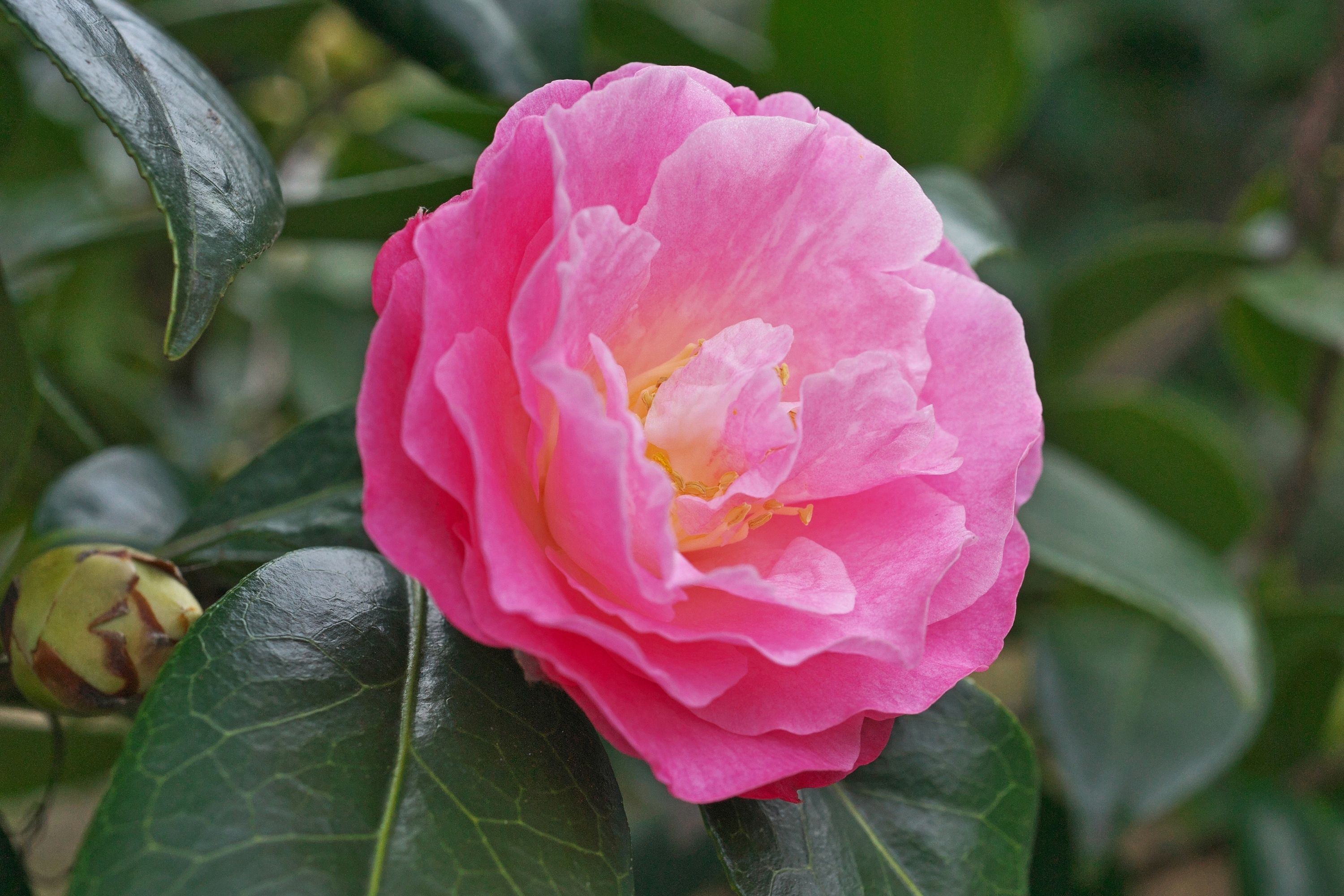Japanese camellia
(Camellia japonica)

Description
Camellia japonica is a flowering shrub species that belongs to the Theaceae family. The plant is native to Japan and China and is widely cultivated as an ornamental plant in gardens and parks. The Camellia japonica is commonly known as the Japanese camellia, rose of winter, or Tsubaki in Japan. The plant is characterized by its beautiful, large, and colorful flowers, which bloom in late winter or early spring. In this article, we will explore the different aspects of Camellia japonica, including its history, morphology, cultivation, and propagation. History: Camellia japonica was first discovered in Japan by a Dutch physician named Engelbert Kaempfer in the 17th century. Kaempfer was serving as a physician for the Dutch East India Company in Japan and was fascinated by the beauty of the plant's flowers. He introduced the plant to Europe, where it became popular as an ornamental plant. In Japan, the Camellia japonica has been cultivated for centuries and is regarded as a symbol of love, purity, and faithfulness. Morphology: The Camellia japonica is a slow-growing evergreen shrub that can grow up to 5 meters tall. The plant has a dense, bushy habit and an upright growth form. The leaves of the plant are leathery and glossy, with a dark green color. The leaves are alternately arranged and have an elliptical shape, with a pointed apex and a serrated margin. The flowers of the plant are large, showy, and come in a variety of colors, including red, pink, white, and variegated. The flowers are single or double, with a diameter of 5-12 cm, and have a symmetrical shape with numerous petals arranged in a circular pattern. The plant produces fruit in the form of a capsule, which contains small, dark brown seeds. Habitat and Range: Camellia japonica is native to Japan, where it is found in the wild in a variety of habitats, including forests, hillsides, and rocky areas. It is also cultivated in Japan and in other parts of the world for its ornamental value. Camellia japonica has been introduced to other parts of Asia, including China and Korea, where it is also cultivated. It has also been introduced to other parts of the world, including Europe, North America, and Australia, where it is commonly grown as an ornamental plant in gardens, parks, and other landscaped areas. In terms of climate, Camellia japonica prefers temperate to subtropical conditions, with average annual temperatures ranging from 8°C to 18°C. It can grow in a range of soil types, but it prefers well-drained soils that are rich in organic matter. Camellia japonica is often grown in partial shade or filtered sunlight, although it can tolerate full sun if the soil is kept moist. Cultivation Camellia japonica is a relatively easy plant to cultivate, and it thrives in moist, well-drained, acidic soil. The plant prefers partial shade and shelter from strong winds and direct sunlight. The ideal temperature for the plant is between 15-25°C, and it can tolerate temperatures as low as -10°C. The plant requires regular watering, especially during the growing season, and it is susceptible to waterlogging, which can cause root rot. The plant requires regular fertilization with a balanced fertilizer, and it is susceptible to nutrient deficiencies, especially iron deficiency, which can cause yellowing of the leaves. Propagation Camellia japonica can be propagated by seed or vegetative propagation. Seed propagation is a slow and unreliable method, as the seeds can take up to two years to germinate, and the resulting plants may not resemble the parent plant. Vegetative propagation is the preferred method, as it produces plants that are identical to the parent plant. The most common method of vegetative propagation is through cuttings, which are taken from the current year's growth. The cuttings are treated with a rooting hormone and planted in a well-drained rooting medium. The cuttings should be kept in a warm, humid environment until they form roots, which usually takes around 6-8 weeks. Uses Camellia japonica has numerous uses, both ornamental and medicinal. The plant is widely cultivated as an ornamental plant in gardens and parks, and it is used as a cut flower in floral arrangements. The plant is also used in the production of tea, which is made from the leaves of the plant. Camellia japonica has medicinal properties, and it has been used in traditional medicine to treat a variety of ailments, including respiratory infections, digestive disorders, and skin conditions. Conservation Status The conservation status of Camellia japonica is classified as "Least Concern" by the International Union for Conservation of Nature (IUCN). This means that the species is not currently considered to be facing a significant risk of extinction in the wild. However, like many species, Camellia japonica may face threats such as habitat loss, overharvesting for ornamental purposes, and climate change. Therefore, conservation efforts may be necessary to ensure the long-term survival of the species in the wild. Some efforts have been made to conserve wild populations of Camellia japonica, such as the establishment of protected areas and the promotion of sustainable harvesting practices. Conclusion Camellia japonica is a beautiful and popular ornamental plant that is widely cultivated for its showy flowers. It is native to Japan, where it has been cultivated for centuries for its beauty and medicinal properties. Camellia japonica is a relatively low-maintenance plant that can be grown in partial shade in a well-drained soil. It is also used in traditional medicine in Japan, where it is believed to have antiviral and anti-inflammatory properties.
Taxonomic tree:







